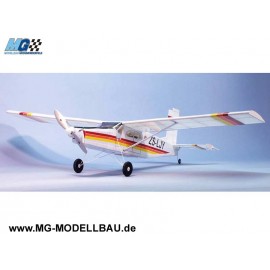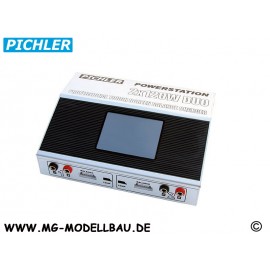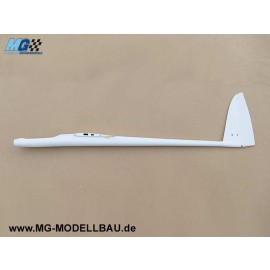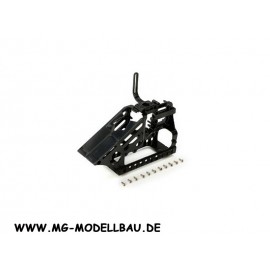The Vintage Model Company Cessna 140 KIT 460mm
At a Glance
- Power System - Rubber Free Flight
- Wingspan - 18" (460mm)
- Approximate AUW - 25g
- Difficulty - Beginner
THE CESSNA 140 - BRINGING PRIVATE AVIATION TO THE MASSES
The Cessna 140 first rolled off the production line in 1946. It was (and still is) a pretty little aeroplane that was cheap to purchase, run and maintain. It also had stable, well-mannered flying characteristics, making it very popular with pilots at a time when post war light aeroplane ownership was beginning to boom in the U.S.A. Along with the even cheaper, lower specification Cessna 120 (which outwardly looks similar apart from a lack of flaps and the rear quarter-lights), over 7500 were reportedly produced, many of which are still flying today.
The original design featured an 85 horsepower engine and it could cruise at over 95 Knots (around 110 MPH). The fuselage was metal, with fabric covered wings. The construction of the wings is not much different to the technique that will be used to build this model.
The things that made the original aircraft such a success also translate into making a very nice free flight scale rubber powered model, which is particularly suitable for the novice builder.
YOUR KIT
This kit is designed for you to build a traditionally constructed, rubber powered, free flight model of a Cessna 140. The kit is provided with the materials (other than paints) to complete the suggested authentic scheme of a red Cessna 140 that is registered in Uruguay.
This is a simple but striking own favourite or more complicated scheme if you wish. Construction of the model from this kit uses the traditional method of "stick and tissue", that consists of a built up balsa wood skeleton (framework), covered with a tissue skin. The balsa frameworks are built over a plan that is printed at the exact scale of the model, which is in essence a real engineering drawing.
Power is provided by rubber strip motor that is wound up before flight. Free flight means just that - once the model is launched, it is on its own. It must follow a predetermined flight path established when the model is initially adjusted for flight or "trimmed". This type of traditional building technique and flying requires a degree of patience and skill, but is extremely rewarding.
Typically for a small model and in the spirit of the traditional kits, profiles are simplified and adjusted from the original and a relatively large propeller is used. This is done so that the model is light and stable enough to fly on its own, is simple in construction and can work with the rubber motor. These adjustments have been done with care and sensitivity so that the shape and spirit of the original aircraft is preserved as much as possible. Also in the spirit of the traditional kits, additional items required to build the model are things that can be found in the kitchen drawer or are easily available on the high street.
KIT CONTENTS
- Three balsa sheets with precise laser cut parts and strip wood.
- PVA glue for building the wooden frames.
- One 150mm diameter plastic propeller.
- One pre-bent motor hook and shaft.
- Three low friction plastic nose bushings - one for the propeller and two for the undercarriage wheels.
- One vacuum formed canopy and spinner.
- Piano wire for the main undercarriage and tail wheel legs.
- One motor peg (cocktail stick or toothpick).
- Rubber motor strip.
- Tissue to cover the model.
- Parts reference sheet (W), full size summary plan sheet (X), scheme diagram sheet (Y) and scheme markings (Z) printed on lightweight paper.
Customers who bought this product also bought:
Already seen?
EUR 189,50
incl. 19% MwSt
EUR 279,00
incl. 19% MwSt
EUR 11,55
incl. 19% MwSt






